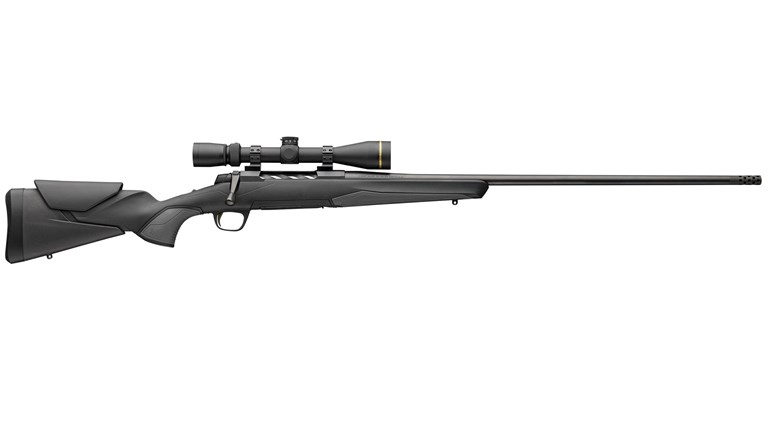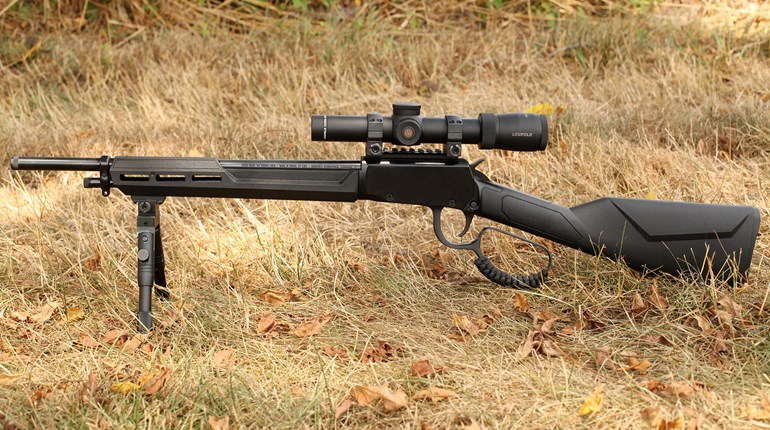
If you fancy a bit of a wrangle among handgunners, we have a surefire mechanism: What is the best handgun to start with?
Our art makes no bones about a candidate we think is first rate. Scion of a famous house—the same that John Moses Browning built—it has much to recommend it beyond pure pedigree. Here’s our case …
.22 Rimfire
We’ve applauded many times over the years what might be called the physical democracy of shooting. Unlike many—indeed most—pursuits, almost any stature of person can match up to some shooting discipline. What’s more, few things reward practice as disproportionately—while there certainly are “natural” shooters, there are many astonishing ones who aren’t. Finally, a huge percentage of the practice that produces pleasing results on any scale can be “fun” in the sense of being directly tied to the goal of a given discipline. Although there are many ancillary skills and ways to train, you still mostly get good at shooting by shooting.
Rimfire brings other advantages to the table. Light in recoil and report, it excites an untamable “startle” reflex in very few people. Ear and eye protections will overwhelm the modest assaults of rimfire with ease if you’re participating, and emissions—in the sense of noise—won’t travel far at bothersome levels.

Then, there’s economy. If one accepts the premise that you improve by doing, .22 LR is tough to beat. A “brick” will while away an afternoon or two quite effectively for $20-25. In these times, not much compares.
The Buck Mark
Browning’s Buck Mark has some graces that new shooters may only appreciate in retrospect. Heritage is one, and not merely as a Browning (though for some of us, that counts considerably). In the case of the Buck Mark, this manifests as a thoroughly proven design. First offered in 1985, some functional and cosmetic elements go back nearly a quarter century further to the “Nomad” and “Challenger” predecessors. A sharp eye around the range will still spot these in routine employ.

Versatility is another. Our count shows 24 variants in current production, ranging in weight from a very “packable” 28 ounces (alloy frame and alloy “sleeved” steel barrel) up to a rock-steady 39 ounces (steel, steel and more steel). Our sample is the suppressor-ready “Field Target” model, fitted out not only with protected forward threads for a “can” (more on this later), but also with adjustable sights and a full length Picatinny rail. All share the same easy-loading 10-round magazine. (You’ll note a paucity of after-market magazines for the Buck Mark too, and with good reason: Originals are not absurdly priced ($22-25), and they last very nearly forever if ours are any measure.)
There’s another versatility we admire in the Browning rimfire, though it may seem of an odd sort: The Buck Mark isn’t like anything else. In a backwards sort of way, this is the main reason we like it as a “first” handgun. True, it has a single action trigger (no cocking, just bang, but in trademark Browning gold), grips, sights, safety, bolt/slide and mag releases and other components like other semi-autos, but not exactly alike. By not trying to mimic the functionality of another type too closely, it succeeds where many others fail. A fine pistol in its own right—and one you’ll very likely keep—it is also one that won’t teach or enforce bad habits that will prove to be a penalty on other remotely common semi-autos.

Room To Grow
Many folks will have no greater aspirations for their Buck Mark than smooth-shooting, reliable accuracy, or perhaps as a teaching gun (nearly any teenager or adult can handle one with ease). But another aspect of well-planned versatility is reflected in the addition of a rail to the top strap of 13 of the available pistols.
Regular “First Gear” readers may suss out where we’re headed. There’s nothing wrong, as we said, in using a Buck Mark as it is, but the addition of a red-dot sight adds another grand level of utility—and fun—to the rimfire mainstay. While these sights may still seem a touch “whiz-bang” to traditionalists or newer shooters, they really aren’t. They’re a settled and excellent technology that can put extra fun into shooting, and especially back into shooting for older eyes. If nothing else, it’s a great way to see if red-dots are for you, but fair warning: We don’t see our Bushnell TRS-25 coming off anytime soon, unless it’s to make room for a C-More. (Steel Challenge, here we come!)
Two Buck Marks—including our sample model—also come with threaded barrels. (See the other here.) This allows a Buck Mark to use an appropriately-calibered suppressor and become a better neighbor still to anyone nearby. We did about half our testing with a nice Keystone Armory “SS” model, and discovered in a hurry that suppressed shooting on a .22 draws a “Yes, I’d love to try it,” crowd in a hurry.

We’ve positioned the nifty Browning as a great “first handgun” candidate, but in retrospect that may be an injustice. “First” handguns are often abandoned, chosen as they frequently are based on well-meant but self-serving advice, modest (or absent) experience and an excess of enthusiasm.
But put your hands around a Buck Mark at any time, and we think only that last—the enthusiasm—will survive.
Visit Browning at http://www.browning.com/; MSRPs on Buck Mark pistols range between $469 -599.
Frank Winn has been studying arms and their relationship to tyranny, meaningful liberty and personal security all his adult life. He has been a firearms safety/shooting instructor for more than 20 years, and earned state, regional and national titles in several competitive disciplines.


































